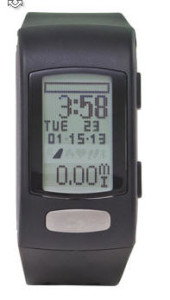by Larry Magid
This article is excerpted from one that first appeared in the San Jose Mercury News
The saying “you get what you pay for” isn’t necessarily true when it comes to technology products, as I’ve discovered when comparing fitness watches.
In January I wrote about smartwatches, including the Fitbit fitness watch and the Samsung Galaxy Gear, which I mostly used because of its pedometer function. It turns out that a few days after that column appeared, the Fitbit Force was voluntarily recalled by its manufacturer because, as the Consumer Product Safety Commission phrased it, “Users can develop allergic reactions to the stainless steel casing, materials used in the strap, or adhesives used to assemble the product, resulting in redness, rashes or blistering where the skin has been in contact with the tracker.”
I also found it hard to close the watch’s metal clasp. It’s odd that a company can build an amazingly high-tech product and then fail to equip it with something as simple as a decent watchband.
Since that column ran, Samsung announced two successors to its Gear watch, the Gear 2 and the Gear Fit. The Fit is primarily a fitness band, though both models will track your steps and measure your pulse and allow you to see incoming texts and emails and accept or reject incoming calls.
Samsung hasn’t announced pricing for the Gear 2 or the Fit but Stuff.TV reported that the Gear 2 will cost $417 and the Fit will be priced at $278. Before it was recalled, the Fitbit Force sold for $130.
I returned my borrowed Galaxy Gear and stopped wearing the Fitbit because I’ve misplaced the proprietary charging cable — yet another annoying thing about this and so many other products. If a company must require you to charge its products, I wish they would at least allow you to use a standard Micro USB cord that you can easily and cheaply replace.
Rather than replace the cable, I replaced the fitness watch with one that’s a lot cheaper and — for my purposes — a lot better.
Lifetrak delivers more for less

The LifeTrak C300 ($50 from Amazon) is in several ways a superior product compared to its much more expensive competitors. Like the other devices, the LifeTrak keeps track of my footsteps, but unlike its more expensive cousins, it doesn’t need to be recharged. It comes with a coin-sized battery that the company estimates will run for 14 months. Any watch repair shop can replace the battery for a few dollars for those not comfortable taking off the back and replacing it themselves.
The C300 also measures your pulse when you hold down a sensor just below the watch face. It calculates the approximate distance you’ve walked in miles and — based on your age, height, weight, activity level and heart beat — it estimates how many calories you’ve burned so far that day. And it can sync your data to an iPhone or an iPad using the Argus motion and fitness app. An Android version is scheduled for later this spring.
LifeTrak also offers the $38 ($29 at Walgreens.com) C200 model that doesn’t include syncing plus the $75 (at Amazon) C410 model also tracks your sleep.
